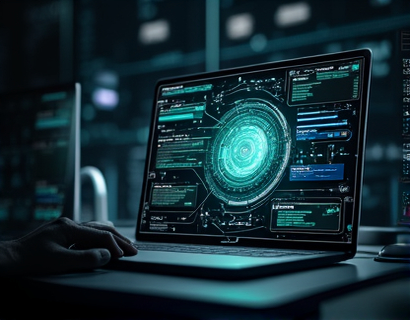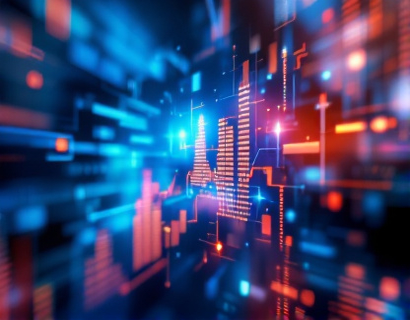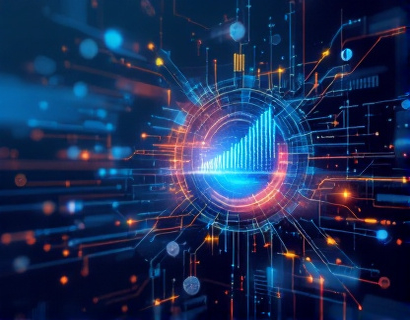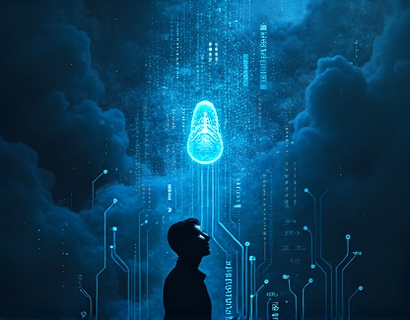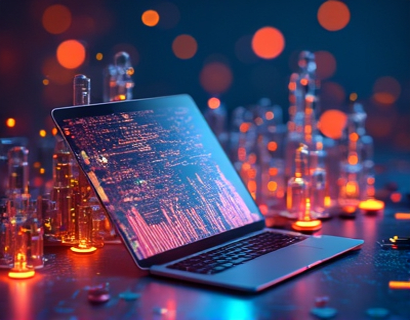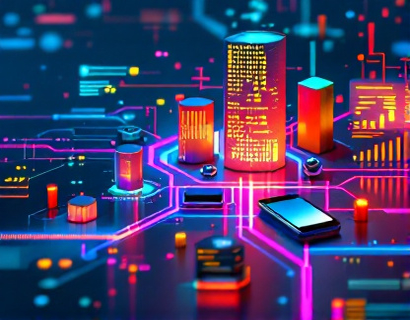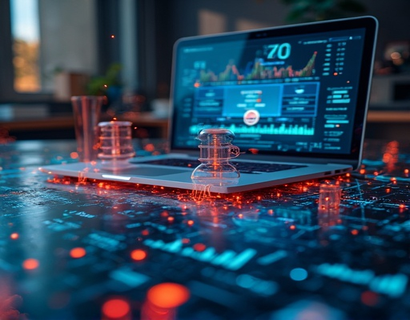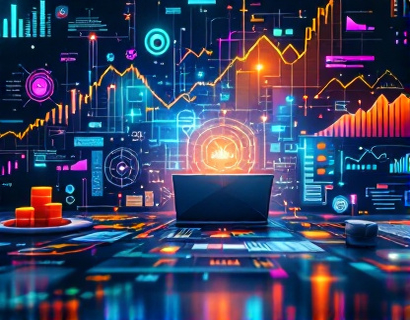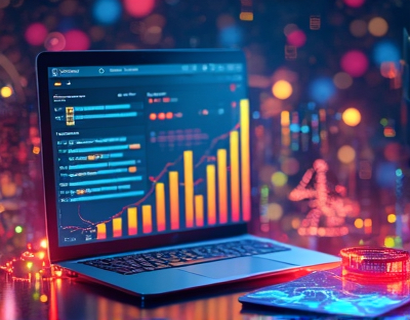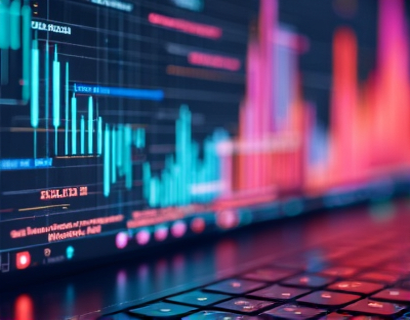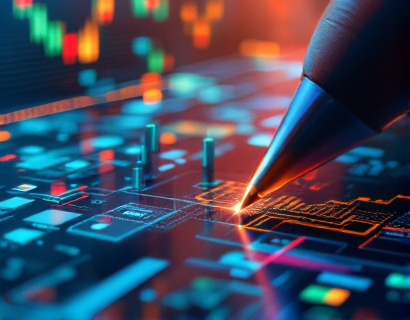Unlocking Digital Potential: Leveraging AI and Crypto for Enhanced Productivity and App Accessibility
The digital landscape is rapidly evolving, driven by groundbreaking technologies such as Artificial Intelligence (AI) and Cryptocurrency. These innovations are not just reshaping industries but are also transforming the way we enhance productivity and access applications. This article explores the synergy between AI and cryptocurrency, highlighting how their integration can lead to unprecedented levels of efficiency and accessibility in our digital lives.
Understanding AI and Cryptocurrency
Before delving into their applications, it's essential to understand the fundamentals of AI and cryptocurrency. AI refers to the simulation of human intelligence processes by machines, particularly computer systems. These processes include learning (the acquisition of information and rules for using it), reasoning (using rules to reach approximate or definite conclusions), and self-correction. On the other hand, cryptocurrency is a digital or virtual token that uses cryptography for security and operates on a decentralized network, most notably blockchain technology.
AI in Productivity Enhancement
AI has become a cornerstone in boosting productivity across various sectors. Smart assistants powered by AI, for instance, can manage schedules, prioritize tasks, and even draft emails, significantly reducing the time spent on mundane activities. Advanced AI algorithms can analyze vast amounts of data to provide insights that humans might overlook, aiding in decision-making processes. In the realm of software development, AI-driven tools can automate testing, debugging, and even code writing, accelerating the development cycle and reducing human error.
Automation and Efficiency
One of the most impactful applications of AI is automation. Repetitive and time-consuming tasks can be automated, allowing professionals to focus on higher-value activities. For example, in customer service, AI chatbots can handle a large volume of inquiries simultaneously, providing instant responses and freeing up human agents to tackle more complex issues. In manufacturing, AI can optimize production lines, predict maintenance needs, and minimize downtime, leading to increased efficiency and reduced costs.
Personalized Learning and Development
AI also plays a pivotal role in personalized learning and professional development. Adaptive learning platforms use AI to tailor educational content to individual learning styles and paces, ensuring that each user receives the most effective learning experience. For professionals, AI can curate personalized training modules based on skill gaps and career goals, facilitating continuous learning and skill enhancement.
Cryptocurrency and App Accessibility
Cryptocurrency, particularly through blockchain technology, offers unique solutions to enhance app accessibility and security. Blockchain's decentralized nature ensures that data is not stored in a single location, making it more resilient to attacks and breaches. This inherent security feature is crucial for applications handling sensitive information, such as financial services and personal data management.
Decentralized Applications (DApps)
Decentralized Applications, or DApps, are a prime example of how cryptocurrency can improve app accessibility. Unlike traditional applications that rely on centralized servers, DApps operate on a blockchain network, ensuring transparency, security, and user control. Users have full ownership of their data, and the application's functionality is not dependent on any single entity, reducing the risk of censorship and downtime. This model is particularly beneficial for applications in regions with unreliable internet connectivity or strict government regulations.
Tokenization and Incentivization
Tokenization, a process where assets are represented by digital tokens on a blockchain, can significantly enhance user engagement and incentivization. By issuing tokens that represent specific rights or rewards, applications can motivate users to participate actively. For instance, a content creation platform might issue tokens to users who contribute high-quality content, which can later be redeemed for rewards or used to vote on platform decisions. This not only increases user engagement but also fosters a community-driven ecosystem.
Synergy of AI and Cryptocurrency
The true power of AI and cryptocurrency is realized when they are combined. The data processing and analysis capabilities of AI can be leveraged to enhance the functionality and security of blockchain networks. Conversely, the decentralized and secure nature of cryptocurrency can provide a robust framework for AI applications to operate in, ensuring data integrity and user trust.
Smart Contracts and AI
Smart contracts, self-executing contracts with the terms directly written into code, can be significantly enhanced by AI. AI can analyze complex scenarios and predict outcomes, making smart contracts more intelligent and adaptable. For example, in supply chain management, AI can monitor real-time data and adjust smart contract terms dynamically to optimize logistics and reduce costs. This integration ensures that contracts are not only secure but also responsive to changing conditions.
Enhanced Security and Privacy
The combination of AI and cryptocurrency can lead to unprecedented levels of security and privacy. AI can detect and mitigate potential security threats in real-time, while blockchain's immutable ledger ensures that once data is recorded, it cannot be altered. This dual-layer security is particularly important for applications dealing with financial transactions, health records, and personal identification, where data breaches can have severe consequences.
Case Studies and Real-World Applications
Several innovative projects are already demonstrating the potential of AI and cryptocurrency in enhancing productivity and app accessibility. One notable example is a project that uses AI to optimize energy consumption in smart cities, while utilizing cryptocurrency to incentivize residents to participate in energy-saving initiatives. The AI system analyzes energy usage patterns and provides personalized recommendations, while the cryptocurrency rewards encourage active participation, leading to a more sustainable and efficient urban environment.
Another example is a healthcare application that leverages AI for diagnostic accuracy and blockchain for secure data storage and sharing. AI algorithms analyze medical images and patient data to assist doctors in making accurate diagnoses, while the blockchain ensures that patient data is securely shared among authorized healthcare providers. This not only improves patient care but also enhances the overall efficiency of the healthcare system.
Future Prospects
The future of AI and cryptocurrency integration holds immense potential. As technology continues to advance, we can expect more sophisticated AI models that can operate seamlessly on blockchain networks, leading to even more innovative applications. The convergence of these technologies will likely result in more autonomous systems, enhanced user experiences, and a new paradigm of digital interaction.
Challenges and Considerations
Despite the numerous benefits, there are challenges to consider. Scalability remains a significant issue for blockchain technology, as processing large volumes of transactions can be slow and resource-intensive. Additionally, the regulatory landscape for cryptocurrency is still evolving, and ensuring compliance can be complex. However, ongoing research and development are addressing these challenges, paving the way for broader adoption and integration.
Conclusion
The synergy between AI and cryptocurrency is revolutionizing the digital landscape, offering powerful tools to enhance productivity and app accessibility. By leveraging the strengths of both technologies, we can create more efficient, secure, and user-friendly applications that cater to the needs of a rapidly changing world. As we continue to explore and innovate, the possibilities are endless, promising a future where technology serves us better than ever before.






